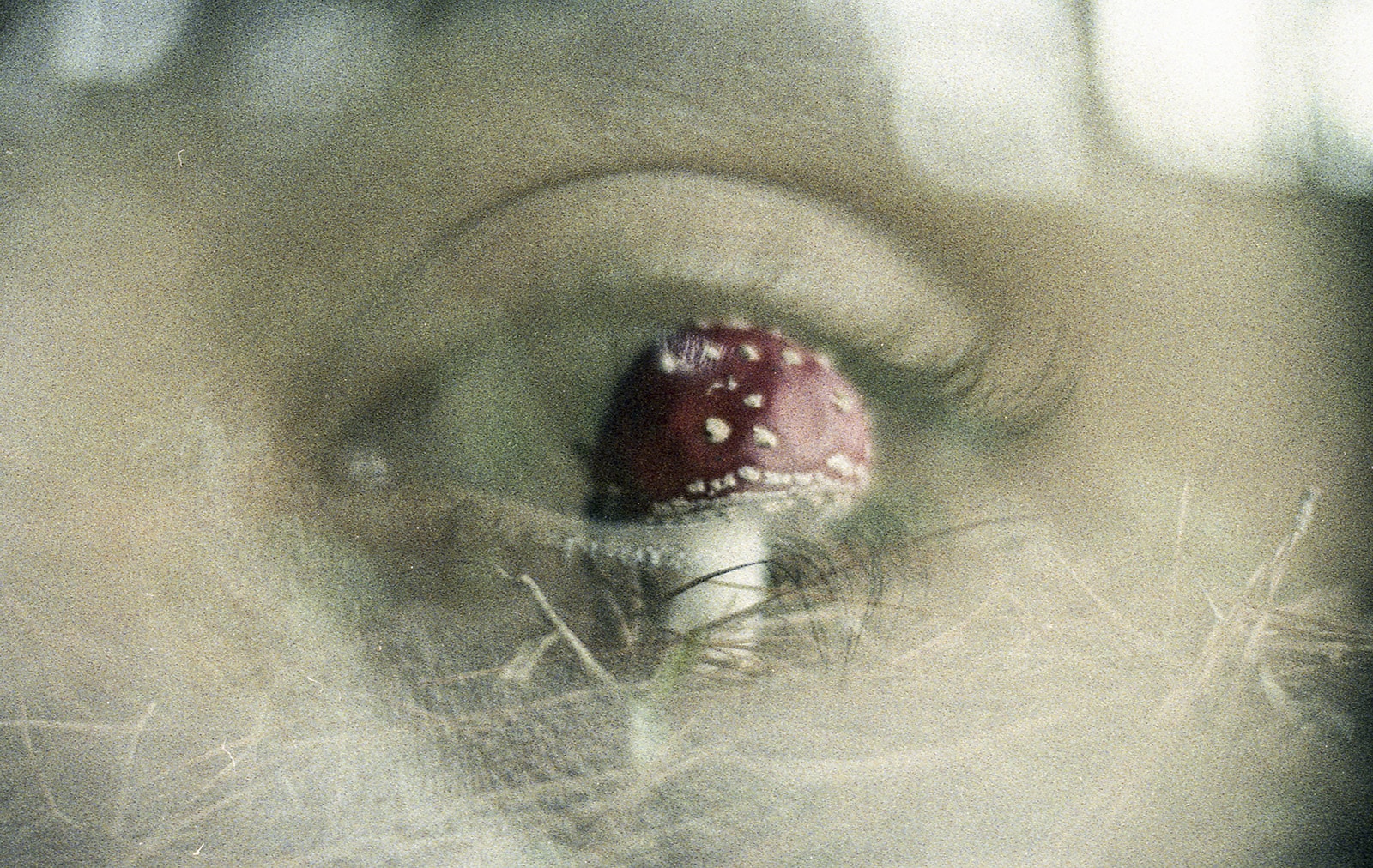
Mushrooms poetics
From a young age, Brazilian photographer Tuane Eggers was fascinated and enchanted by mushrooms. The enchantment increased when she experimented with mushroom cultures on images and after seeing them under the microscope. Then, she started a co-create work with mushrooms, which creates from the thought that the study of mushrooms allows: the transformation, the change of perspectives, and the behavior of the mycelium and the spores.
By Marcela Vallejo
While working as a press advisor at the Universidade do Vale do Taquari, photographer Tuanne Eggers met Walter Beys da Silva, a fungi expert professor working on biological pest control. Tuane, who was preparing a note on the professor’s work, seized the moment and proposed something she had been thinking about for some time: to make a mushroom culture on photographs. The result was exciting and led her, sometime later, to enroll in the master’s program in visual poetics at the Federal University of Rio Grande do Sul.
Tuane discovered photography as a teenager. She liked to take self-portraits in different places, especially at home. So she began to explore her mother’s backyard and garden and discovered the mushrooms growing among the plants. “Little by little,” she says, “I began to see these beings that also decompose things and are part of the transformation of matter. I was interested not so much in the somber aspect of decomposition but that they are starting points for the transformation and emergence of other things”.
For her, it was a process of enchantment that also began to transform her gaze. After that first experiment with a crop on photographs and a trip where she began to encounter fungi, Tuane started a long-term project that manifested in several photographic series and works. Such as Estudos sobre fungos e montahas, the transmedia project Fluxus fungus, the short film of the same name, and the master’s thesis A poética dos fungos.
At first, Tuane was enchanted by the shapes, the colors, and the textures. But then, Tuane says, “as I delve deeper into this universe, I also perceive that the mystery surrounding it intensifies: and my enchantment expanded.” Now she not only portrays mushrooms but thinks of her work as one in which there is co-creation with these living beings, transforming images into small sculptures in constant transformation. Mushrooms have led her to play with the superimposition of images, textures, and layers of meaning.
In this interview, we talk about a series of concepts that put in dialogue biology, mycology, philosophy, and art, all from the fungi’s hand, beings of a “discreet and fundamental existence for the balance of life on the planet,” mysterious organisms that allow interaction between life and death.
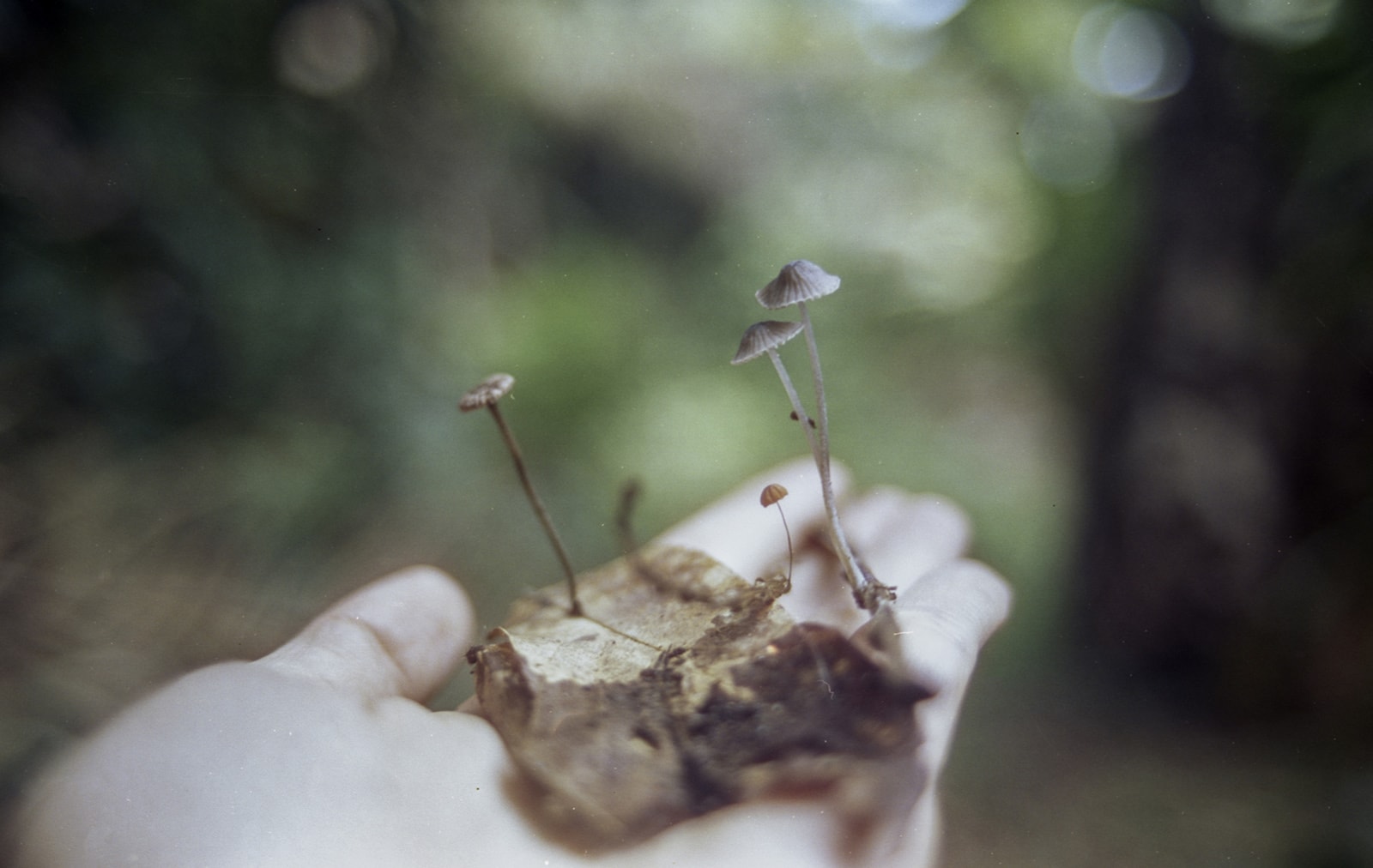
In one of the texts quoted in Fluxus Fungos appears, the idea/image of the “Dos Puertas” says that in the situation of being in front of two doors, fungi do not have to choose; it can go through both. What does that mean?
Fungi are different from us. When faced with two paths, we have to choose one because we have only one body, and it is impossible to take both. But fungi can go both ways and expand wherever they want because they throw spores and proliferate around.
Both on the Fluxus Fungus website and in your master’s dissertation, you have a solid and dense conceptual base. What is your process for creating the images? Do these concepts precede and guide the creation, or do they appear after taking the pictures?
The imagery of the research is present. Whenever I see mushrooms and desire to photograph them, all the study is present. It’s not as if I thought about it beforehand. When I put the titles to the photos, for example, it is a moment of reencounter with the image, it is not something that comes from before, but it is a process afterward when I think about what I want to say with the photo.
For example, the photo entitled “La Memoria es un Campo de Invención.” Almost five years passed between the moment I took the photo and the moment I gave it a name. When I revisit the image to publish it, I reflect on the feeling it conveys. In this case, it made me think about memory as something that reinvents and reconfigures itself each time we visit it.
Another example is “Una Hoja También Puede Ser Un Hogar.” Something that caught my attention when I took the photo was that several little mushrooms inhabited a leaf as if it were their floor. That feeling didn’t strictly come to me in words when I captured the image, but I could translate it when I published the photo.
Some photographers think long before: they decide how the framing will be and how each element will be in that image. But for me, the process has never worked like that. It’s always been more fluid and accessible; it depends on the influence of my environment, the climate I’m in, and the people I’m with, most of the mushroom photos I’ve taken have been in travel environments with friends or on small field trips. Also, mushrooms require particular attention, a way of being present.
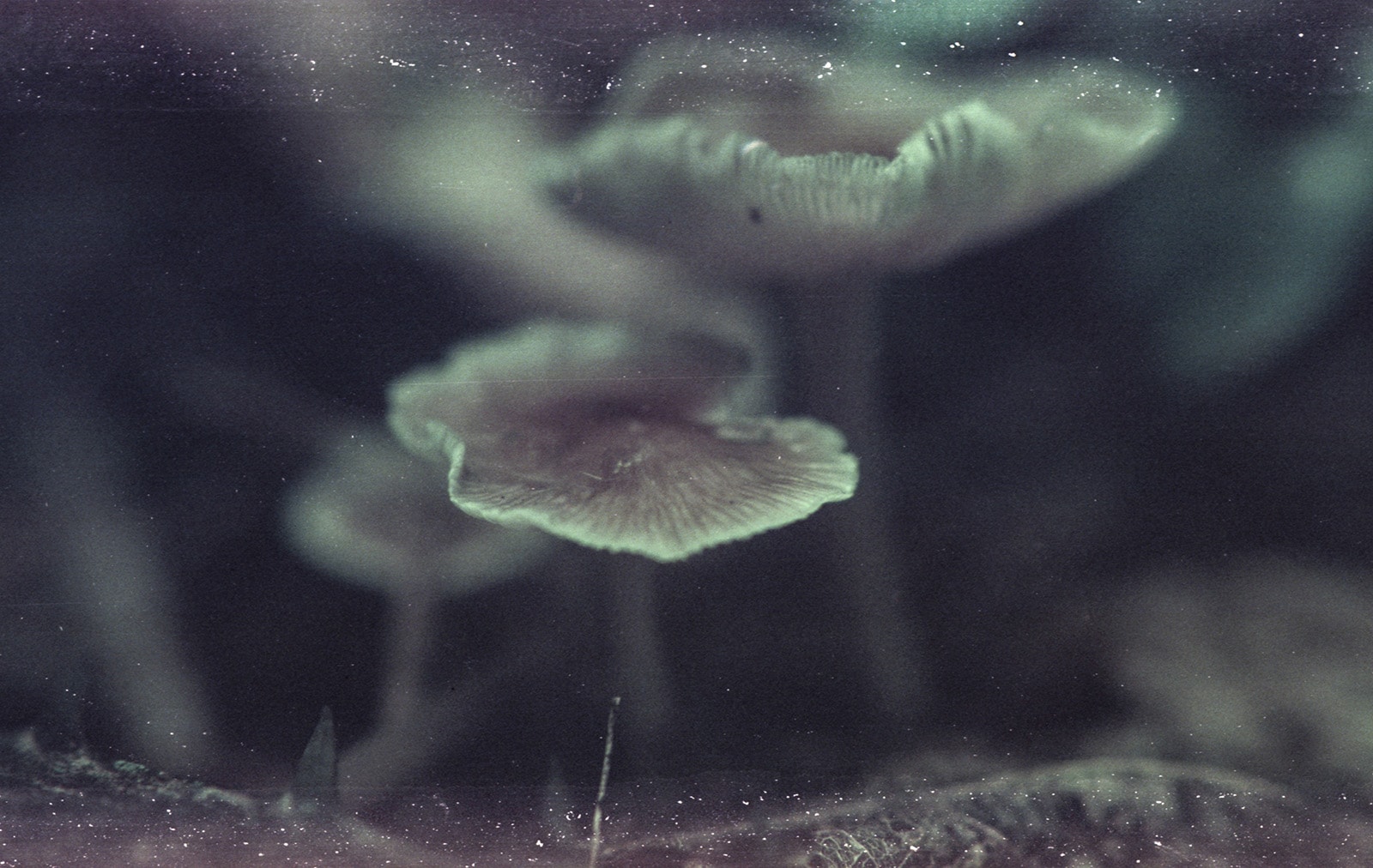
Something that appears in the photos intervened by the mushrooms is the superposition. When I saw them, I thought that the name, Studies on mushrooms and mountains, had to do with the fact that this intervention generates small reliefs.
Something I like a lot is that they left the contours half-confused in these photos. I use the term confusion of the shapes because it does not give us to understand well what the mushroom is and what the image is; they are decomposing what the photographic image was.
There is also an overlapping of images.
Yes, many people think it is an effect that I do afterward. But no, I do it the moment I photograph. I use a camera that facilitates this process. When I take a photo, I secure the film and take another one so everything stays in the same frame. I almost always know what the image will be, but I often work with surprises; in the end, you never really know how it will turn out.
Aren’t you afraid of mistakes?
I think analog photography is constantly working with mistakes and the beauty of errors. It also implies relating to mistakes differently because you have to deal with many surprises; sometimes they are good, and sometimes not. It has already happened to me that I think everything will turn out very well, and when I see the developed film, I realize that it didn’t work. Also, the image has a different attachment because those are the only records you have. It’s very different from digital photography, where you can shoot infinitely and see if it looks how you want it to.
Some time ago, I made a trip that lasted a few months. I traveled by car with some friends from Porto Alegre to Cusco. When two months had passed, I had already used several rolls, and we were in Cusco. There is expected to be no water at night, and someone left the bathroom faucet open; when the water came back, it wet everything, including the backpack in which I had one of the rolls. I thought it had been damaged, but I kept it to develop it when I returned. When I did, I discovered some very interesting stains, I liked that accident, and I think there was also some fungus because of the humidity. A friend of mine uses a term I like a lot to talk about things like that; he says he is open to the beauty of disaster. For me, it has to do with that.
“Mushrooms are agents between life and death. And they make us see death from a different perspective. Our cultures have a strong Christian base, and we still see death as a taboo, as the end of life. Mushrooms show us that we are just a flux of life and that life is still happening on many levels.”
Another word that appears in your work is precariousness. I understand that it has to do with vulnerability. Is that about your job or mushrooms?
I think mushrooms talk a lot about precarity. The book The Mushroom at the End of the World: On the Possibility of Life in Capitalist Ruins by Anna Tsing has greatly influenced me. There she talks a lot about a species called matsutake cultivated in Japan, but the species spread to other parts of the world. She comments that after the Hiroshima bomb, that was the first being to emerge from the earth.
This story led me to think about how these beings, precisely because of their ability to transform things, sometimes in environments that we believe to be devastated and precarious, for them, on the contrary, are ideal environments to be born and transform into something else.
The possible analogies with the moment we live on this planet, when everything seems so precarious and there is no clear perspective of the future, are wonderful. It is not for nothing that many thinkers are beginning to look at beings such as fungi and lichens, which can inhabit places that are not ideal.
In the video, you say that fungi are at a critical moment between life and death. And you ask yourself if what we have to do is to let everything disappear or if, on the contrary, we have to think about recomposing from what we have. What do you think is the way?
They are agents between life and death. And they make us see death from a different perspective. Our cultures have a strong Christian base, and we still see death as a taboo, as the end of life. Mushrooms show us another view, that we are just a flow of energy and that life is still happening on many levels. When our body ceases to exist as we knew it, it will be food for other beings, and other things will emerge from there.
At the end of the Fluxus fungus video, I make a proposal that has to do with changing our look at things: it is unnecessary to think of the end of the world, the end of our specie, as something given that we cannot reverse. That is, in fact, a very dangerous narrative; this thinking that is being talked about today that we are living in this Anthropocene era is having an irreversible impact on our planet.
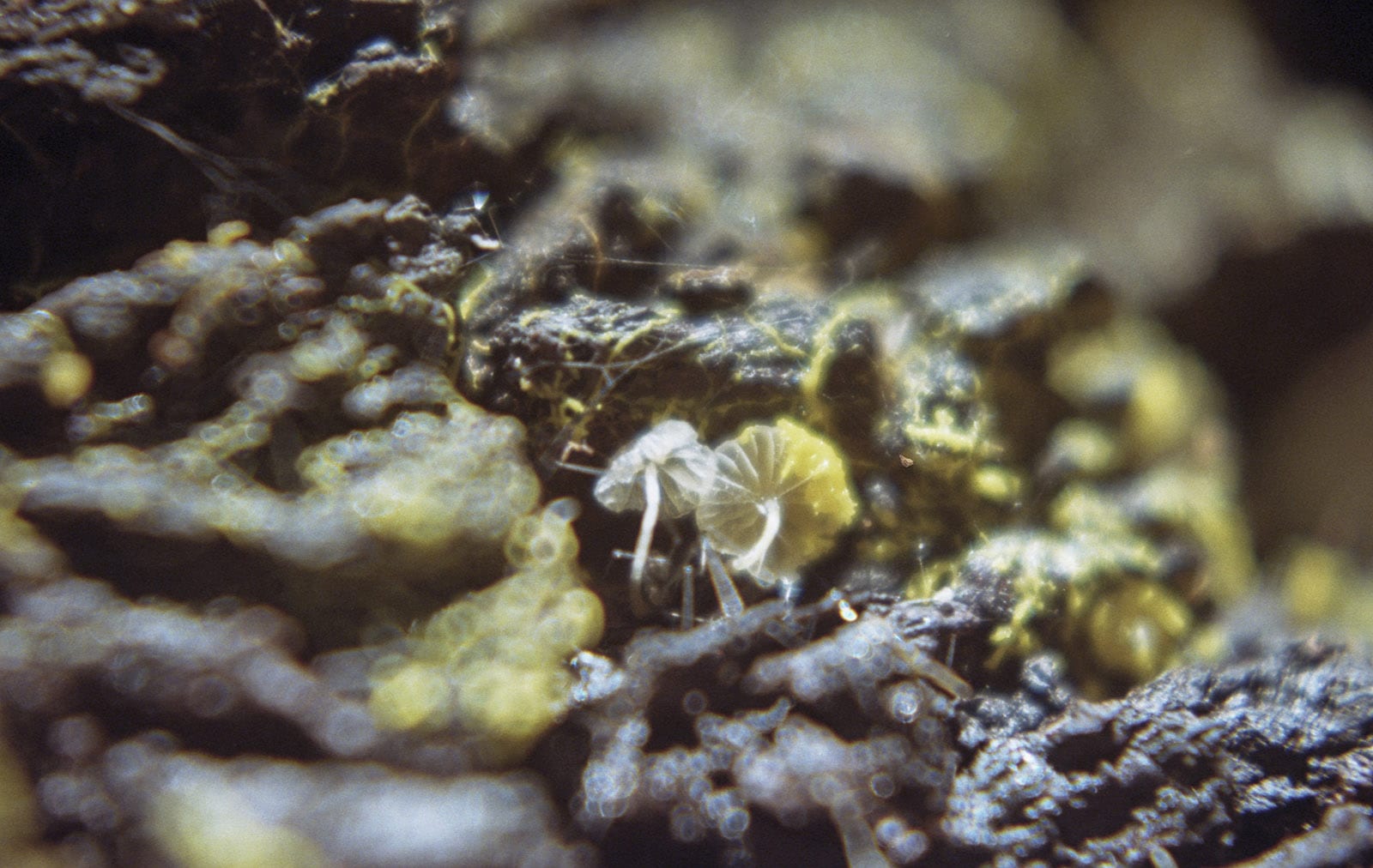
What makes it dangerous?
That narrative is dangerous because it makes us think there is nothing to do and that we should not make an effort. I believe that there are many things we can do, and for that, we need to reconnect with those other beings, to perceive that we live on the same planet with other species, and that many other stories can be told.
One thinker who talks a lot about that is Donna Haraway. I like it very much when she says that we must consider the Anthropocene, but we cannot let it be more prominent than it is. She proposes the term -cene, almost as a game, to understand that there are many other -cenes to be thought about, different stories that can be told. The step to take now is to look toward the other beings that coexist with us.
The idea of rare kinships is exciting. In that sense, I was thinking about worlds in contact and following your statement that the world is not anthropocentric.
There is a significant movement, even in academia. At least here in Brazil, and I imagine in other countries as well, there are more non-European, non-North American, and indigenous authors being cited as references. There are other stories and universes in many of these authors and these books, even in the human universe.
For example, we talk about the Anthropocene as a relationship of man on the planet, but in reality, it is a specific type of existence. Indigenous existence has not had the same impact on the earth. Some studies indicate that the Amazon rainforest, for example, was created, to a large extent, as a garden cultivated by many communities.
In that sense, it seems unfair to speak of the ‘Anthropocene’ and its impacts as something so generalized, as if all human beings were equally responsible.
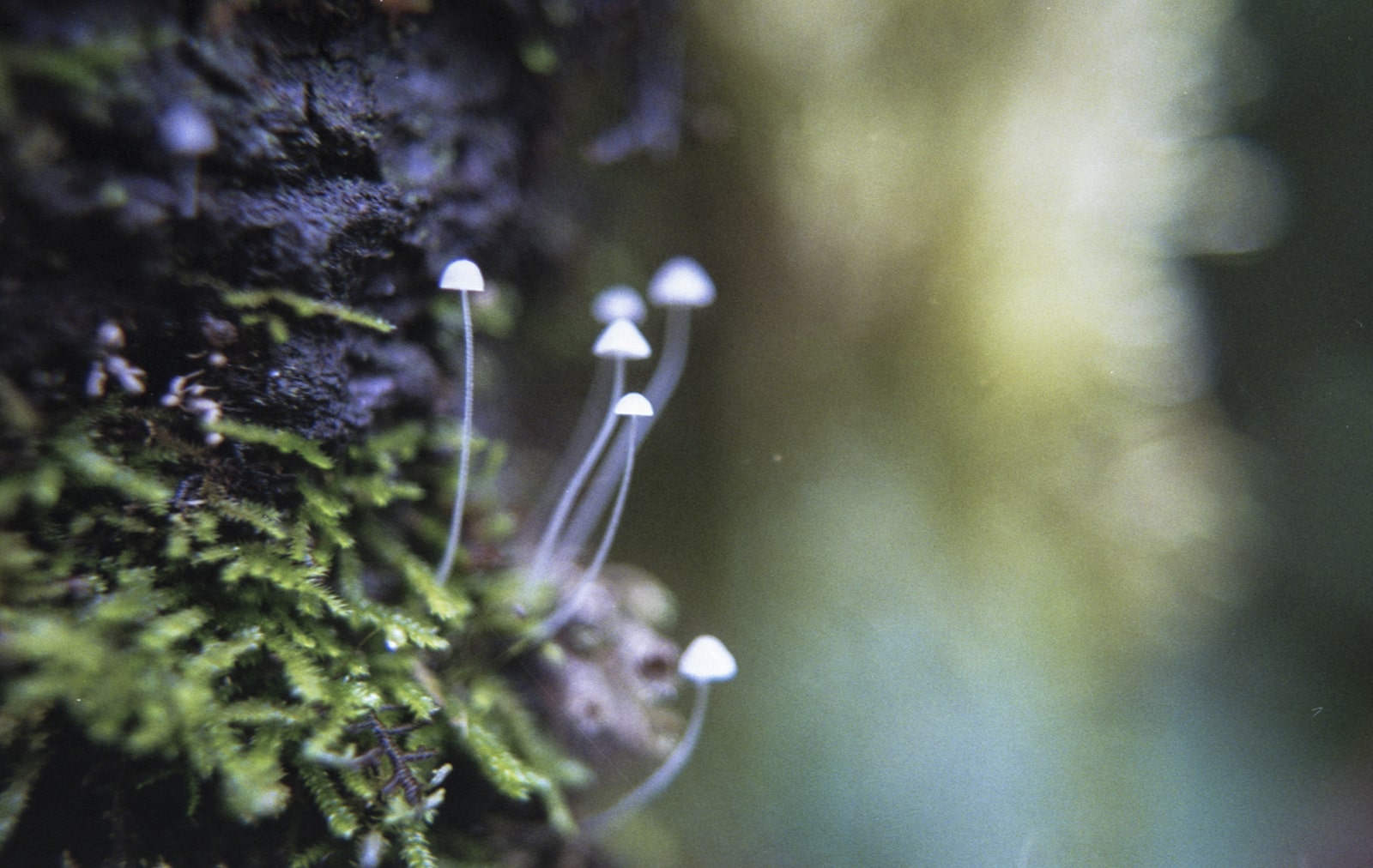
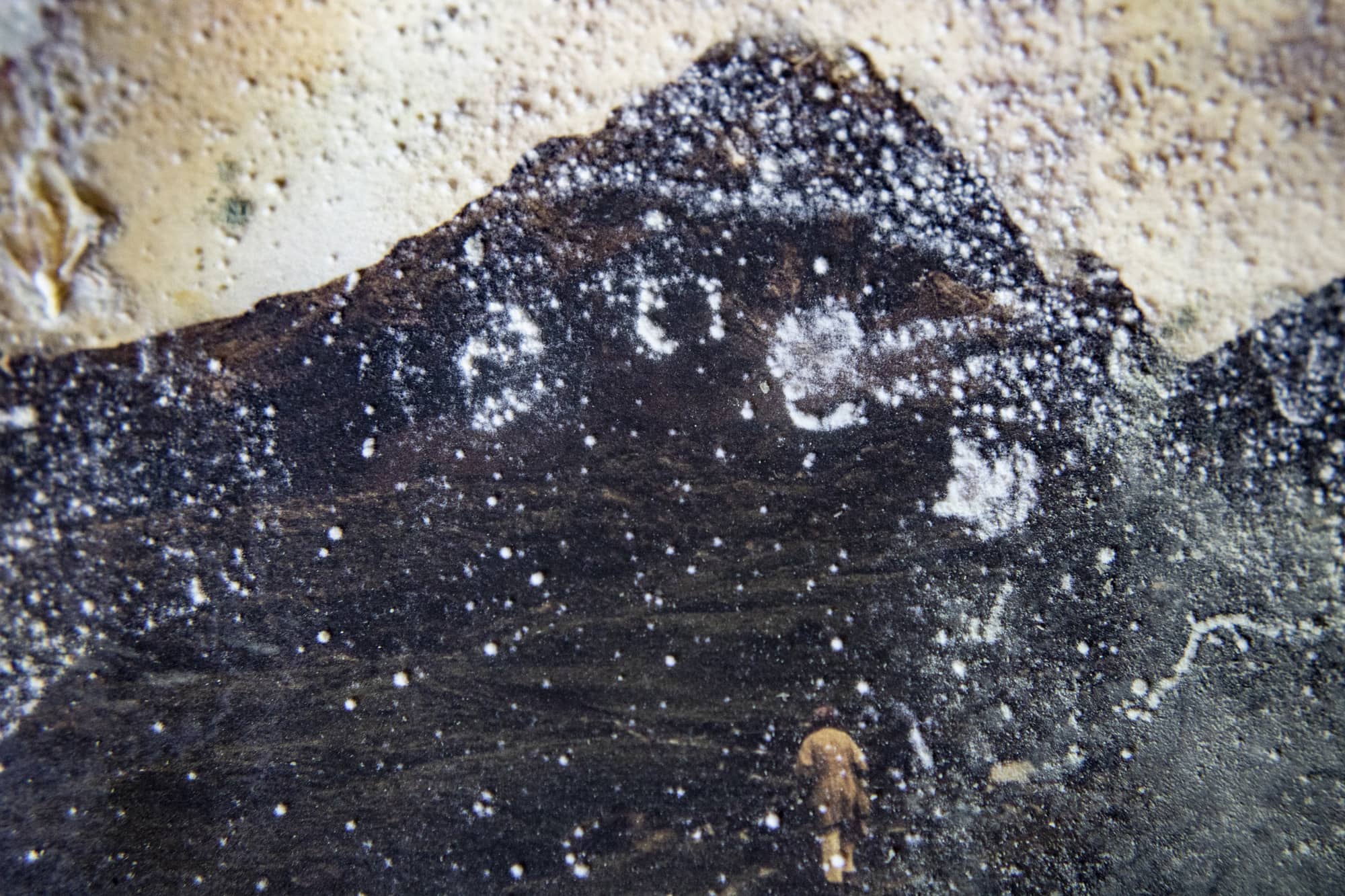
On the site, you have a quote from Robin Wall Kimmerer, an American Potawatomi thinker, in which she talks about the word Puhpowee. That word refers to ‘the force that causes mushrooms to rise from the earth at night.’ It was shocking for her to learn the meaning of that word and realize that there was no analog in English or scientific terms. That word leads her to reflect on how words are used to define the limits of knowledge in scientific language, and what is beyond remains nameless. And it is as if the unknown did not exist, but where is the imagination?
Science itself starts from that unknown and also from imagining things. It is right there where hypotheses are formulated, and things are made. I love the universe of fungi partly because it is so unknown because very little is known. Only a tiny percentage of the fungi that exist have been described by science.
A funny thing about the experience I had of going to the fungi lab to observe them under the microscope was that afterward, Melissa Palacios, the Colombian researcher who invited me, told me she would send me the images we had captured and possibly the name of the species by titling the files. Many arrived with the title “no idea.”
For me, it was hilarious, and at the same time, it made perfect sense; in my research, I talked a lot about that mystery and lack of knowledge. Only some things have been addressed by science.
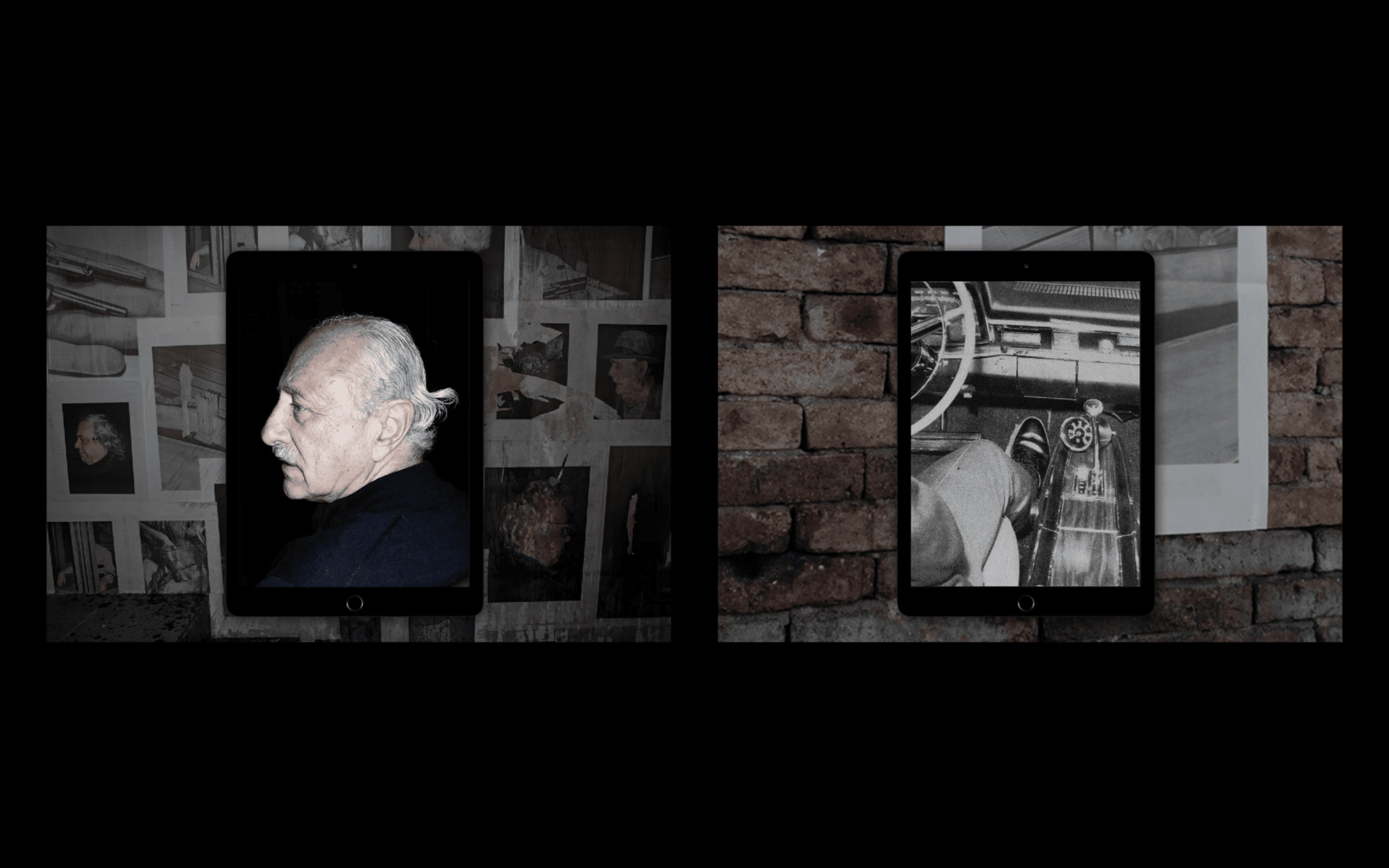
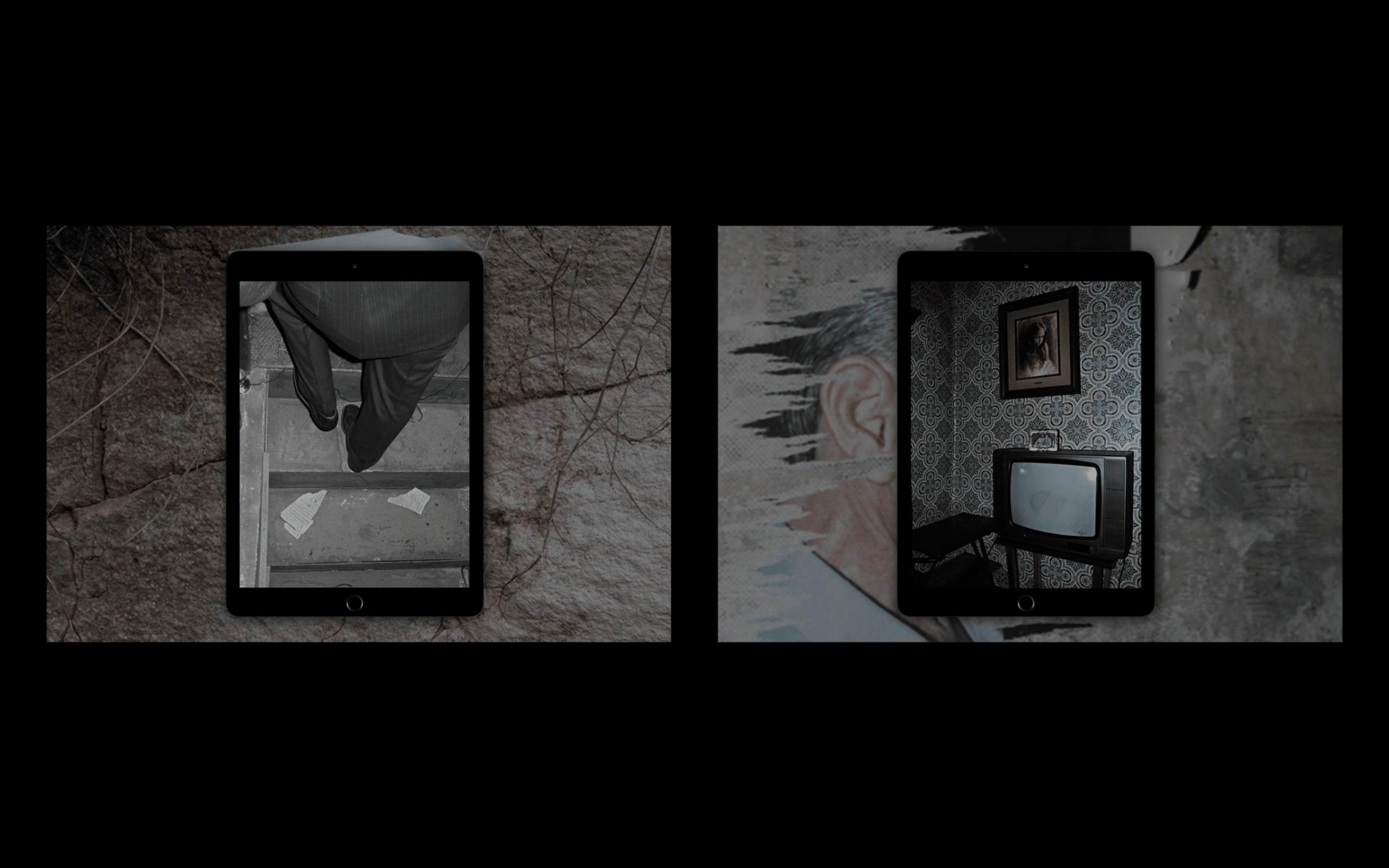
Salvi Danés: Blackcelona, The Portable Photo, Espadaysantacruz Studio, 2016 (ed.: Salvi Danés and Gonzalo Golpe)


